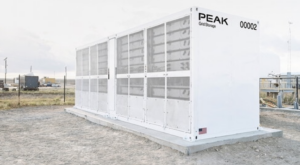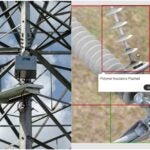After several years of relatively steady demand, U.S. electricity demand is now surging, driven by various factors, including commercial sector growth, the urgent development or expansion of data centers, and the adoption of new power-hungry artificial intelligence (AI) technologies.
As the U.S. Energy Information Administration recently announced, the country’s power consumption will reach record highs in 2024 and 2025.
COMMENTARY
In response, the U.S. is adding the most new power generation capacity in more than two decades. The sector is pursuing this critical growth at a time when the aging workforce gap has been met, but the workforce is less experienced than in prior years.
According to the Center for Energy Workforce Development, “The aging workforce gap has been addressed and replaced with the new challenge of developing a younger workforce.”
In total, more than half of utility workers (56%) have fewer than 10 years of service, requiring workforce planning efforts to incorporate training, mentorship, and upskilling alongside talent identification and recruitment efforts.
The stakes are high. Power generation is a tightly regulated, capital-intensive industry that requires precise workforce development to ensure reliability, safety, and efficiency. The power industry’s ability to transfer critical knowledge hinges on three interconnected elements: ensuring younger workers thoroughly understand core processes, mastering documented procedures, and gaining irreplaceable hands-on experience through direct observation and participation.
Of course, it also requires a culture in which experienced leaders have a collaborative mindset, a commitment to high standards, and actively involve and engage younger employees.
Challenge and Opportunity For Multi-Generational Collaboration in Effective Knowledge Transfer
A multi-generational workforce can be enormously beneficial for utilities. However, harnessing the skills and competencies of each generation can also pose several unique challenges, including:
● Scheduling preferences: Younger workers often prioritize flexibility and autonomy in their schedules. They want less rigid requirements about being at the plant or on-site unless their role requires it, which can chafe the established expectations of more veteran employees. This requires a results-oriented management team that effectively balances flexibility with accountability.
● Technology and Process Changes: Younger workers are more likely to question outdated systems or processes and may push for technology upgrades to aging information systems or question established procedures. The benefits are obvious: new technologies can outperform legacy systems, and better, more efficient processes are better for everyone. Organizations must navigate the friction between maintaining proven methods and implementing efficiency improvements.
● Work Style Differences: Different generations tend to have their own expectations about work environment and management styles. In general, younger generations often prefer more collaborative, less hierarchical structures, and traditional power industry culture may clash with these differences in work styles.
● Knowledge and Experience Gap: Older employees have deep institutional knowledge, while younger workers bring fresh perspectives and new ideas. This can create a work environment where balancing respect for experience and openness to innovation is critical.
Harnessing the benefits of a multi-generational workforce requires understanding the challenges and opportunities while developing protocols and practices that facilitate connection, collaboration, and knowledge sharing.
Elements of Effective Knowledge Transfer
Effective knowledge transfer in the power generation space results from intentional organizational and individual choices, habits, and practices. It involves:
● A Collaborative Mindset: This creates a positive environment of working with others, being open to different perspectives, valuing the contributions of others, and working together towards a common goal.
● Team Problem-Solving: Experience transfer can’t happen without doing work and solving problems together. This approach leverages each person’s diverse skills, knowledge, and perspectives to develop effective solutions.
● Safety-First Environment: Health, safety, and well-being are crucial in the power and utilities space. Leaders can create this environment by having clear policies and procedures, providing regular training so everyone understands protocols, encouraging open dialogue, continually evaluating potential risks, and setting a clear leadership example and commitment.
● Long-Term Development Focus: Developing others is done through deliberate leadership, training, delegation of tasks, and granting increased autonomy. Senior leaders today should take a long-term view of identifying, developing, and preparing successors. This also includes elements like creating a clear roadmap, investing in ongoing education and skill development, prioritizing continuous learning, and building relationships and networks that enable future leaders to lean on others for support.
Knowledge transfer doesn’t occur accidentally. It’s the product of many intentional choices that produce progressively better individuals, teams, and companies.
How Facilitative Leadership Makes Knowledge Transfer Possible
Facilitative leadership is a time-tested approach to developing skilled leaders in the power generation space. The approach emphasizes collaboration, participation, and empowerment.
Specifically, facilitative leadership enhances leadership impact by balancing the needs to achieve results, maintaining effective processes, and building strong relationships. It offers a set of principles and tools for coaching and developing others, creating clear plans of action and shared language around making decisions and building agreements.
For leaders and their teams, the benefits are multifaceted, including fostering employees who are more involved, engaged, empowered, and authentic. More specifically, facilitative leadership:
Empowers Others: Facilitative leadership empowers others by creating an environment where individuals feel confident and capable of taking initiative, making decisions, and contributing to the success of the team or organization. As a result, senior leaders can elevate others in their understanding of operations or procedures. This allows for the building of confidence, facilitates learning and growth, and allows leaders to recognize the contribution of others.
Seeking Maximum Appropriate Involvement in Decision-Making: Leaders in power generation often must balance regulatory requirements, operational efficiency, financial constraints, and customer needs.
Facilitative leaders use the principle of involving the right people in the decision-making process to the greatest extent that is suitable for the situation. The idea is to balance participation with the need of the leader to maintain efficiency and control.
This begins by identifying key stakeholders to determine who should be involved based on expertise, interest, or impact on the outcome. Next, facilitative leaders assess the situation to decide on the level of involvement needed from different stakeholders. They communicate clearly how decisions will be made and the role each person will play in the process.
By using the principle of “maximum appropriate involvement” versus “minimum necessary,” facilitative leaders build buy-in and commitment while retaining control of the situation.
Building Others’ Skills and Capabilities: Leaders can support team members in developing skills and capabilities. This is best done through an ongoing coaching relationship in which the leader coaches or develops the others.
By having a powerful conversational process, leaders can guide, coach, and support others in gaining new insights, exploring challenges, and providing ongoing feedback—all critical elements for knowledge transfer and continuous learning.
As power and utilities look to expand their capacity while also accommodating an emerging multi-generational workforce, facilitative leadership provides a framework for leaders at every level to build a collaborative culture.
In summary, power and utility companies are best equipped to drive cultural transformation by equipping and empowering others to share knowledge effectively, make decisions as a team, improve interpersonal and process management capabilities, accelerate change adoption, and create higher levels of structured and collaborative problem-solving regardless of generation.
Today’s Employees | Tomorrow’s Leaders
As power companies rapidly expand their capacity and modernize their infrastructure, effective knowledge transfer is foundational and essential.
Facilitative leadership provides the framework to bridge generational gaps, ensuring that critical experience and innovative ideas are shared seamlessly.
By fostering a collaborative, inclusive culture where leaders at all levels are empowered to mentor and develop others, power companies can best meet today’s growing demands while training tomorrow’s workforce to maximize their potential in the months and years ahead.
—Chris Williams serves as the chief operating officer for Interaction Associates. His background includes more than 10 years in the professional services space in business operations, recruiting, business development, and complex research roles. Learn more by visiting the company website and connect with Chris on LinkedIn.










